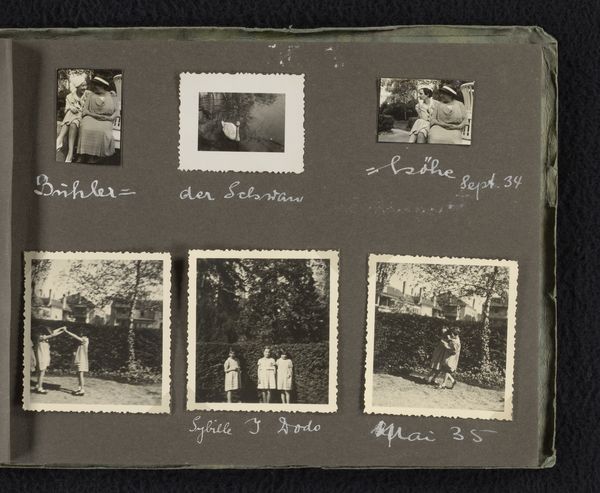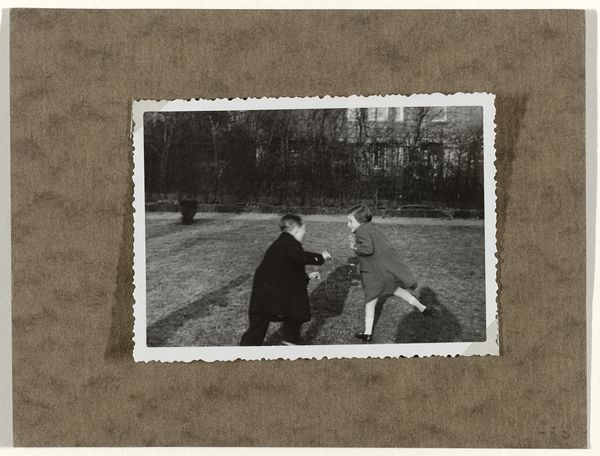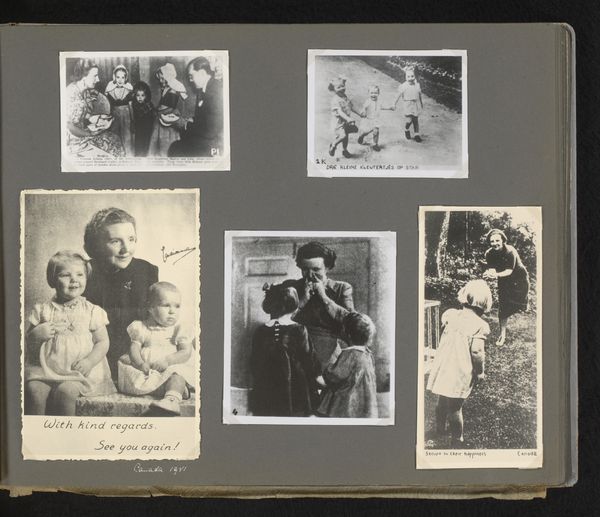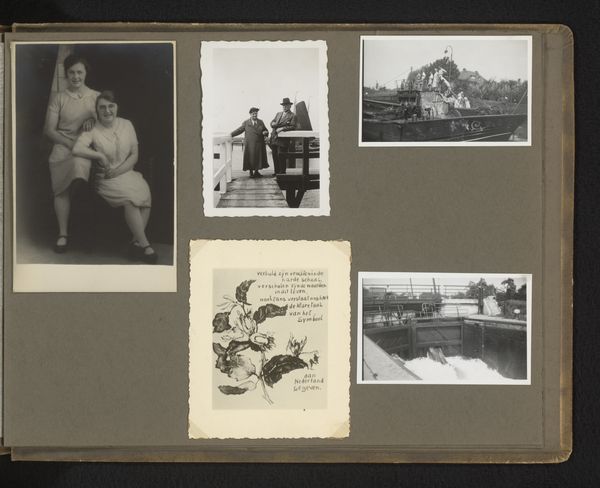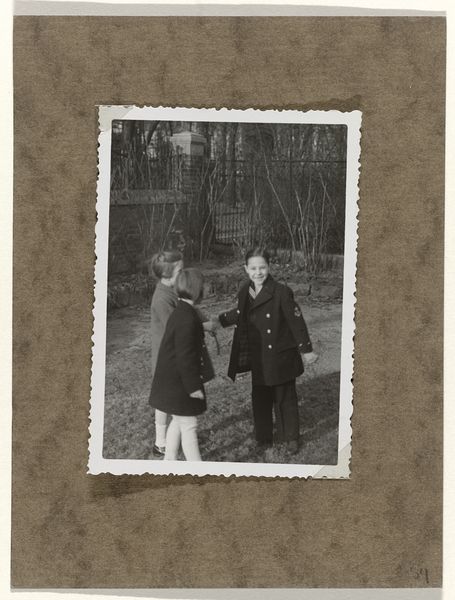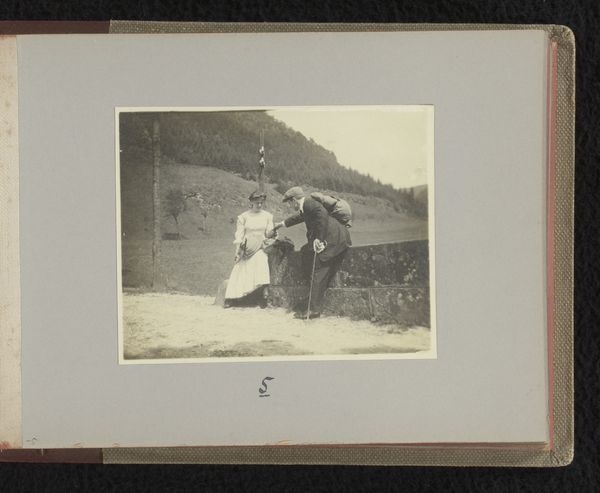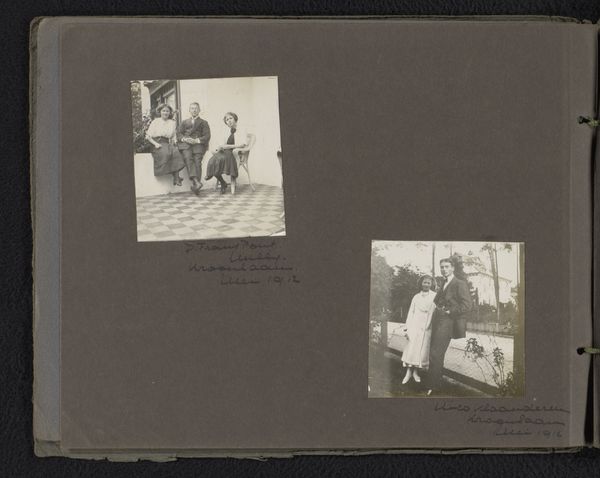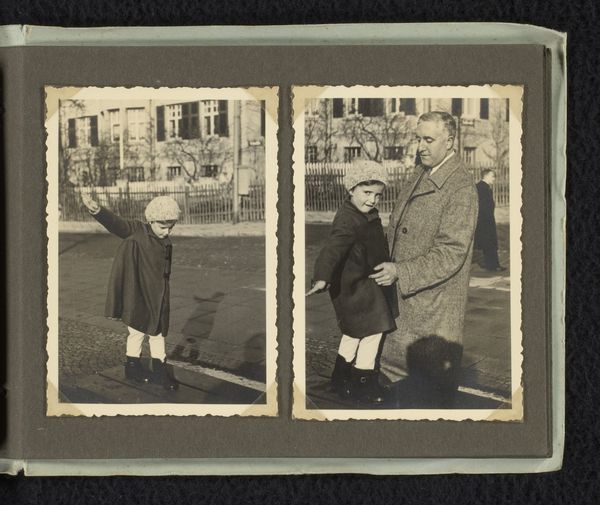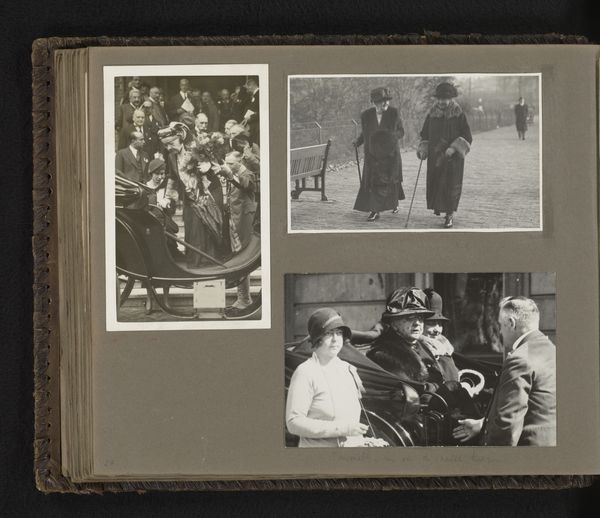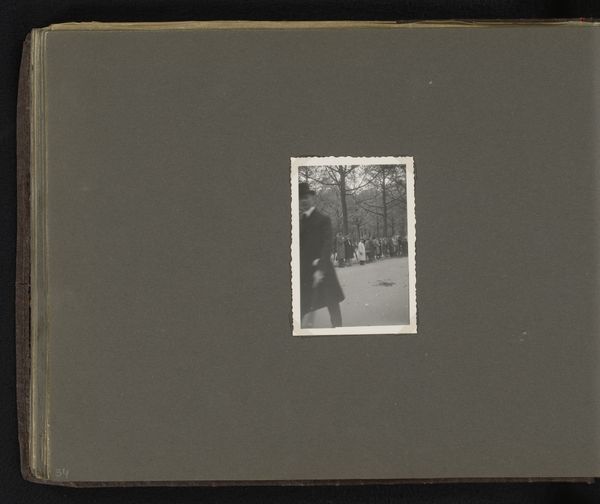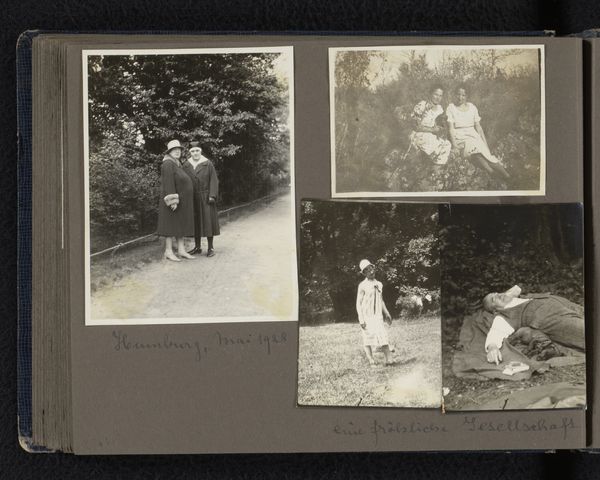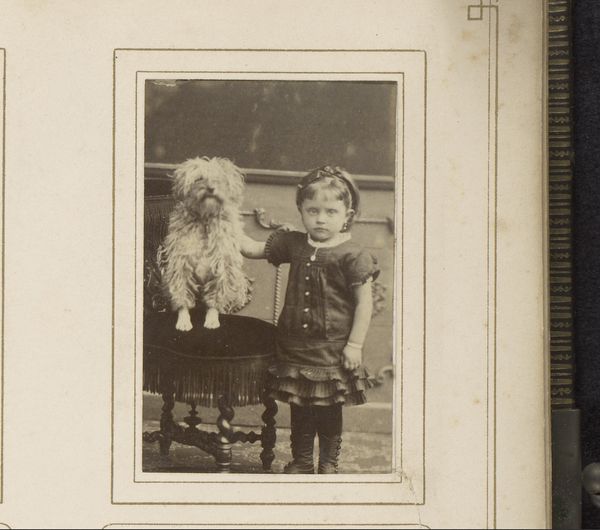
Isabel Wachenheimer, Erica en Hansl in de tuin van de woning van Willy Moos in Hamburg, Bellevue 62, in maart-april 1935 Possibly 1935
0:00
0:00
mixed-media, photography, gelatin-silver-print
#
portrait
#
mixed-media
#
landscape
#
archive photography
#
photography
#
historical photography
#
historical fashion
#
gelatin-silver-print
Dimensions: height 65 mm, width 90 mm
Copyright: Rijks Museum: Open Domain
Editor: Here we have a gelatin silver print, “Isabel Wachenheimer, Erica en Hansl in de tuin van de woning van Willy Moos in Hamburg, Bellevue 62, in maart-april 1935,” possibly from 1935. It feels very candid, almost like a snapshot, and the handwritten notes give it a personal touch. What stands out to you about this work? Curator: I'm particularly interested in the material choices here. A gelatin silver print signifies a mass-producible image, readily available, but then contained within what appears to be a hand-crafted frame or backing. Consider what this juxtaposition does; It transforms a repeatable object into something singular and cherished. The labour involved in mounting it is key here, what do you think? Editor: That’s interesting. I hadn’t considered the contrast between the industrial and the handmade. So, it's not just a photograph but also a crafted object? Curator: Exactly! The physical presence of the materials – the paper of the photograph, the adhesive used to mount it, even the texture of the backing – they all speak to acts of labor, time and preservation. Who do you think framed this? A professional? A member of the family perhaps? Editor: Maybe a family member. The handwriting adds to that feeling. Knowing it's 1935 in Germany… did that context play a role in how or why it was produced? Curator: Undoubtably. Given the historical context, consider the domestic sphere becoming a site of resistance through creation, making something to preserve against the backdrop of displacement and precarity. What appears to be a simple snapshot becomes an artifact documenting the experience and care despite social upheaval. Editor: So it's more than just a family photo, it's also an archive of care and resistance conveyed by how it was constructed? Curator: Precisely. Thinking about the labor and materials highlights these themes of both creating and memorializing a place within the tumultuous landscape of that period.
Comments
No comments
Be the first to comment and join the conversation on the ultimate creative platform.
